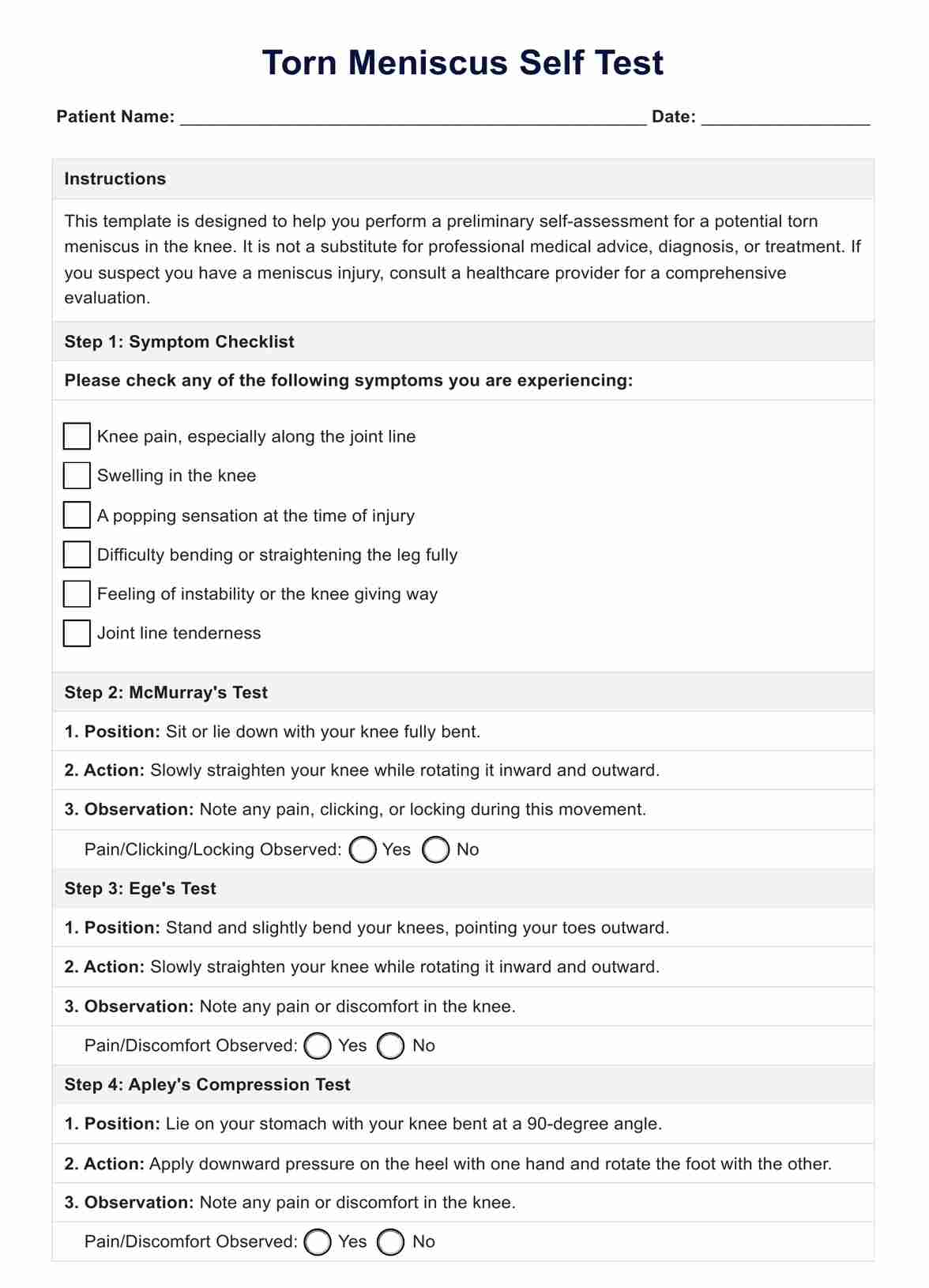Small tears may heal independently with rest and conservative treatment, while larger or more complex tears might require surgery.

Torn Meniscus Self Test
Discover how to identify a torn meniscus with our self-test guide. Learn about meniscus function and symptoms, and download our free self-test template today.
Use Template
Torn Meniscus Self Test Template
Commonly asked questions
Recovery times vary depending on the tear's severity and treatment method, ranging from a few weeks to heal minor tears to several months for surgical recovery.
While accidents can't always be prevented, maintaining strong, flexible knee muscles and practicing good sports techniques can reduce the risk of knee injuries.
EHR and practice management software
Get started for free
*No credit card required
Free
$0/usd
Unlimited clients
Telehealth
1GB of storage
Client portal text
Automated billing and online payments











